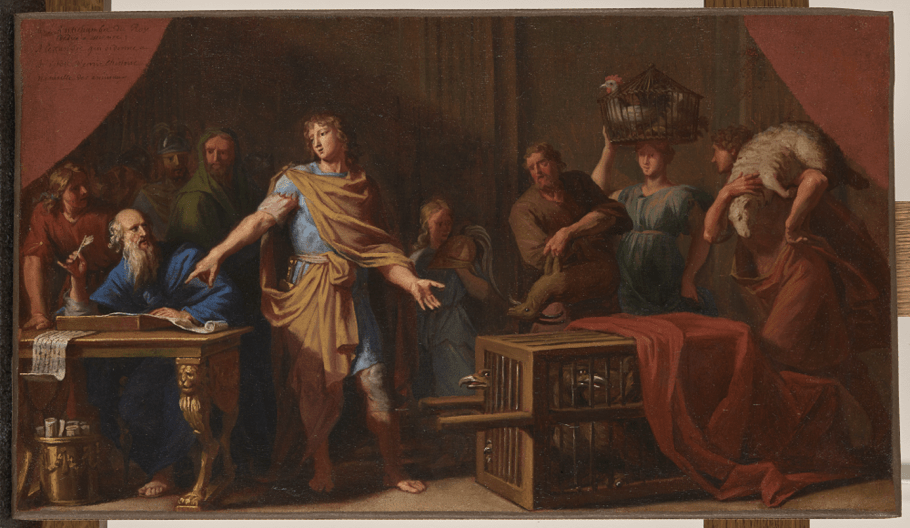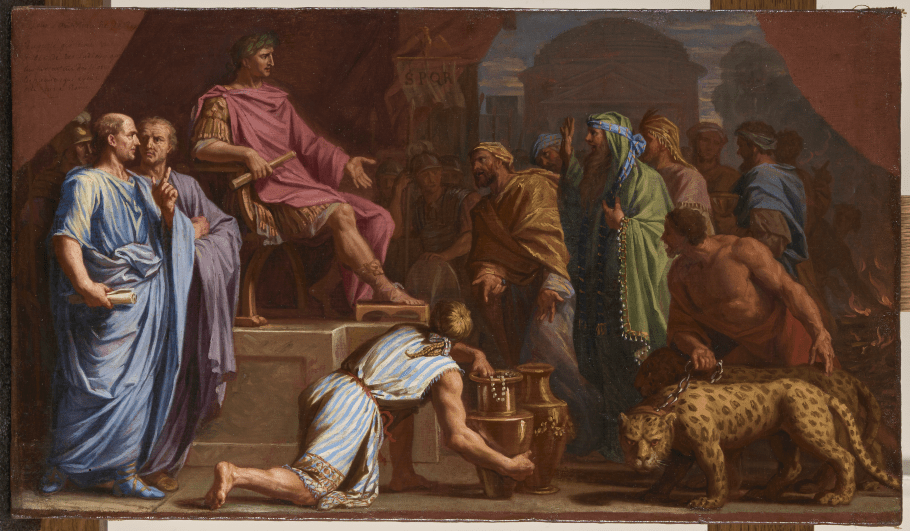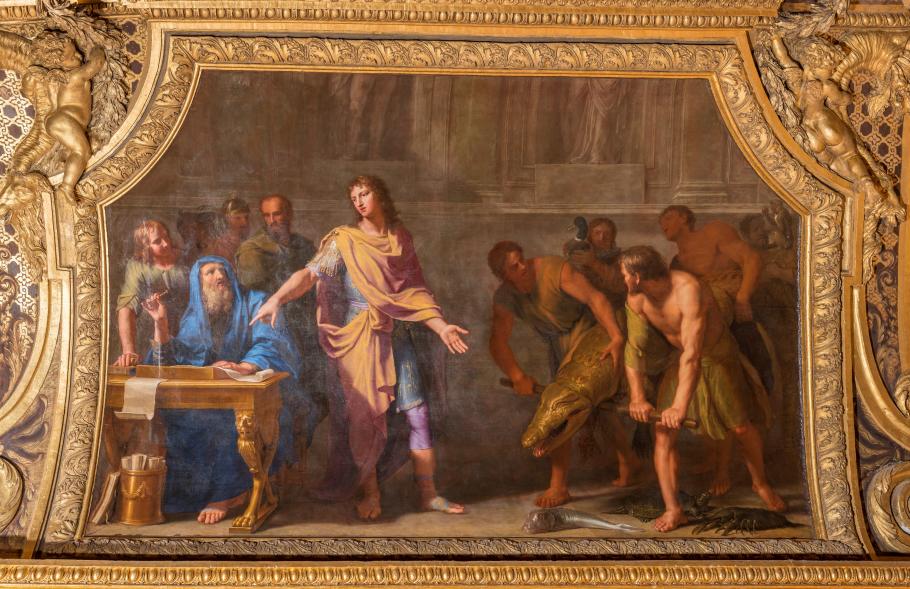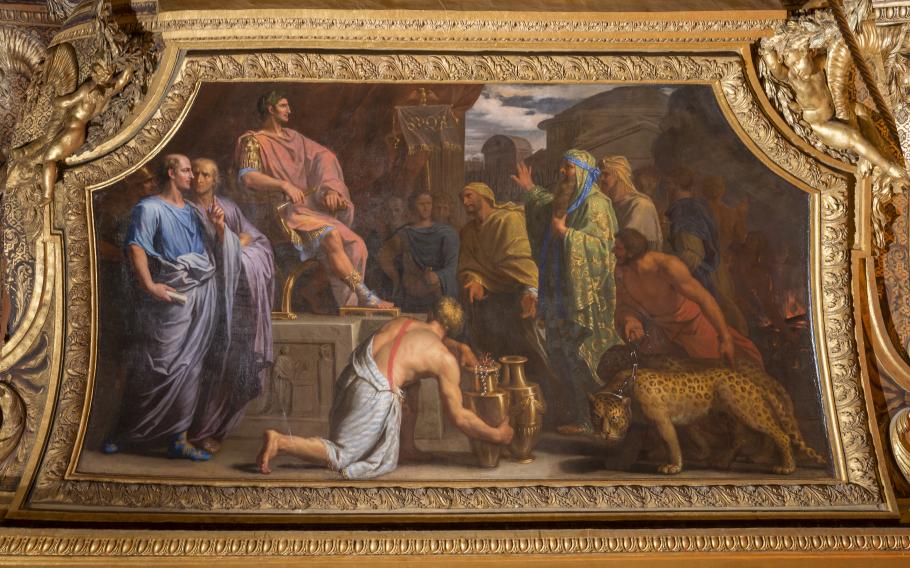For the exhibition The King’s Animals, open from October 12th to February 22nd, 2022, the Palace of Versailles presents two works never before seen by the public: Alexandre le Grand offrant des animaux à son professeur Aristote (Alexander the Great Offering Animals to his Professor Aristotle) and Auguste recevant une ambassade d’Indiens (Augustus Receiving a Delegation of Indians), both by Jean-Baptiste de Champaigne (1631-1681). Béatrice Sarrazin, general heritage curator in charge of 16th- and 17th-century paintings, reflects on the unique way the Palace acquired these two works in 2021.
Two original works restored thanks to the patronage of the Friends of Versailles
Jean-Baptiste de Champaigne, Alexandre le Grand offrant des animaux à son professeur Aristote (Alexander the Great Offering Animals to his Professor Aristotle), 1672-1679, Oil on canvas. Photo post-restoration. © EPV / C. Fouin Jean-Baptiste de Champaigne, Auguste recevant une ambassade d’Indiens (Augustus Receiving a Delegation of Indians), 1672-1679, Oil on canvas. Photo post-restoration. © EPV / C. Fouin

What are these works, and why are they important for the Palace of Versailles’ collection?
In 1672, Louis XIV commissioned French painter Jean-Baptiste de Champaigne to create these works for two voussoirs in the ceiling of the Mercury Room in the King’s State Apartment. In early 2021, these prime paintings re-entered the collection of the Palace and were restored thanks to the patronage of private donors through the Société des Amis de Versailles. Presented for the first time in The King’s Animals exhibition, they will then go on permanent display in the History of the Palace gallery.
In addition to completing the collection of prime paintings, these works demonstrate the creative process of the artist who made the rest of the ceiling of the Mercury Room. They fit in beautifully with the theme of the exhibition.
Why is their acquisition considered “exceptional”?
By the greatest of chances, these two works¾by the same artist, made to adorn the same room¾appeared on the art market within two months of each other. Their unique character added to their artistic and historical interest. Coming from two different private collections, Alexandre le Grand offrant des animaux à son professeur Aristote (Alexander the Great Offering Animals to his Professor Aristotle) and Auguste recevant une ambassade d’Indiens (Augustus Receiving a Delegation of Indians) were put up for public auction and were acquired by pre-emption in January and March 2021, respectively.
What are the differences between these preliminary paintings and the final ones hung in the Mercury room? What does this say about the society and mores of the period?
Comparing these earlier versions with the final result is quite interesting. Auguste recevant une ambassade d’Indiens (Augustus Receiving a Delegation of Indians) differs in just a few details from the final composition. On the other hand, Alexandre le Grand offrant des animaux à son professeur Aristote (Alexander the Great Offering Animals to his Professor Aristotle) shows farm animals and eagles in cages, whereas the large-scale version features more exotic creatures. It’s a significant reversal, though understandable with the subject matter: the painting depicts Aristotle delving into his History of Animals, which highlighted how domestic animals lack nobility (even going so far as to put eagles, a symbol of royalty, in a cage). It seems the modello* did not exactly please the king and Colbert…
*a completed version of a work to be sent to the commissioner of a piece








